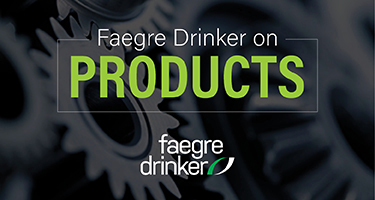We think Lone Pine orders are pretty fair. Lone Pine orders are case management orders that require plaintiffs in multidistrict litigation (MDL) to produce specific evidence without which the plaintiffs cannot make a prima facie case. There is nothing unfair about dismissing a case that is fatally flawed for want of critical evidence that cannot be obtained. Yet Lone Pine orders rarely sit well with plaintiffs who cannot (or do not want to have to) make the showing required of them. Rather than accept their fate, these plaintiffs often attack the Lone Pine order in an effort to delay the inevitable. We discussed one such effort in the In re Zostavax MDL in 2022 and earlier this year. The In re Taxotere (Docetaxel) MDL now provides another example, not only of how plaintiffs attack Lone Pine orders but also of how courts should respond to these unmerited attacks. In re Taxotere (Docetaxel) Prods. Liab. Litig., 2024 WL 4362982 (E.D. La. Oct. 1, 2024).
Subject: Prescription Drugs
FDA Publishes New Artificial Intelligence & Medical Products White Paper
On March 15, the United States Food & Drug Administration published a white paper entitled “Artificial Intelligence & Medical Products: How CBER, CDER, CDRH, and OCP are Working Together.” FDA announced the paper by sharing a short letter from Commissioner Califf, where he reaffirmed the Agency’s commitment to “promoting the responsible and ethical development, deployment, use, and maintenance of safe and effective medical products that incorporate or are developed with AI.” The white paper does not contain any new pronouncements of FDA position, but refers to existing guidance and serves as a reinforcement for existing FDA policy regarding AI.
Continue reading “FDA Publishes New Artificial Intelligence & Medical Products White Paper”
Michigan Repeals Pharma Immunity Provision
Michigan recently signed into law a repeal of the immunity provision under its Product Liability Act, presenting a new litigation risk in Michigan for pharmaceutical companies. The provision had granted near-complete immunity to pharma for the past 30 years, as the only of its kind nationwide. Michigan’s new law—Senate Bill 410 (SB 410)—removes this immunity, leaving intact a rebuttable presumption of non-liability and caps on non-economic damages.
SB 410 goes into effect on February 13, 2024, and is likely non-retroactive, meaning alleged injuries would have to occur after that date for the new law to apply. Commentators predict increased Michigan litigation relating to opioid use, insulin price gouging, and Medicaid fraud.
Continue reading “Michigan Repeals Pharma Immunity Provision”
Lack of “Newly Acquired Information” Defeats Plaintiffs’ Claims in Zofran MDL
Zofran (ondansetron) has often been used to combat nausea during pregnancy. It has never been approved by the FDA for that indication, but clinical experience has not supported an association with pregnancy-related risks – for example, a recent systematic review and meta-analysis concluded that use of ondansetron during pregnancy was associated with a reduced incidence of miscarriage but “was not associated with abnormal pregnancy outcomes,” including a variety of birth defects. Nevertheless, plaintiffs have alleged that Zofran causes birth defects and that the warnings accompanying the drug should have said so. Those claims were dismissed in 2021 when the district court held them preempted, and the First Circuit recently affirmed that decision in In re Zofran (Ondansetron) Products Liability Litigation, — F.4th —, 2023 WL 128570 (1st Cir. Jan. 9, 2023).
Plaintiffs in the Zofran MDL alleged, among other things, that the defendants failed to warn of birth defects observed in certain animal studies. Because such claims implicate the warnings accompanying an FDA-approved drug, they are preempted unless the manufacturer could have unilaterally amended the label through the Changes Being Effected (CBE) regulation. The CBE regulation permits a manufacturer to amend a product’s labeling without prior FDA approval “to reflect newly acquired information” and thereby “add or strengthen” the warnings where there is “evidence of a causal association” between the drug and the subject on which the warnings are being amended.
Continue reading “Lack of “Newly Acquired Information” Defeats Plaintiffs’ Claims in Zofran MDL”
5 Major Drug and Device Developments of 2022
As we ring in the new year, it is time once again to reflect on some of the most significant legal developments for drug and device companies this year. The list below is by no means exhaustive (who could forget the Rule 702 updates that took place this year, which will carry over into 2023?), but provides a brief recap and assessment of five of the most interesting and consequential developments affecting drug and device law in 2022.
Continue reading “5 Major Drug and Device Developments of 2022”
The Zantac Rule 702 Order: TLBR (Too Long, But Read)
On opening an opinion, lawyers habitually roll their eyes when they see a table of contents. Even more so when they learn the opinion is over 300 pages. The MDL order granting defense motions to exclude experts and for summary judgment in In re Zantac (Ranitidine) Products Liability Litig. (S.D. Fla. Dec. 6, 2022), however, is a worthwhile read. The court’s analysis and prose is thorough, clearly reasoned, well-supported, … and highly readable. It reveals a court willing to roll up its judicial sleeves, tackle and explain the fundamental science in detail, and rigorously apply Rule 702 to perform its essential gatekeeping function – to insulate the jury, and the defendants, from flawed advocacy masquerading as scientific evidence and holding retained experts to reasonable standards of intellectual rigor.
The Zantac litigation involves claims that the active ingredient in popular heartburn medication ranitidine breaks down to produce excessive levels of NDMA, a probable human carcinogen, under certain storage and biological conditions. That sounds scary. FDA has set a low daily intake limit of NDMA, a byproduct of, among other things, a common diet.
Continue reading “The Zantac Rule 702 Order: TLBR (Too Long, But Read)”

